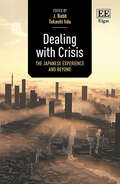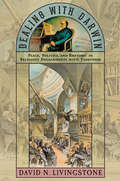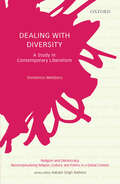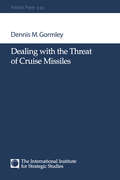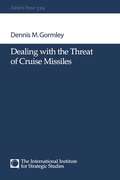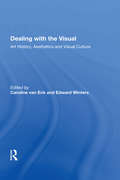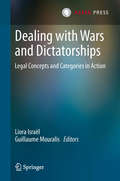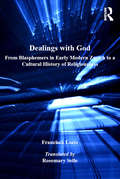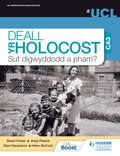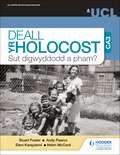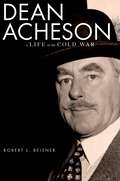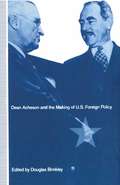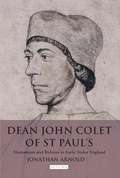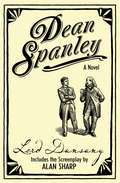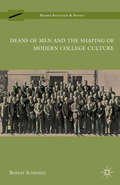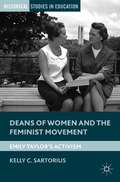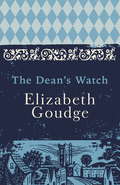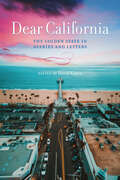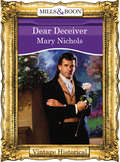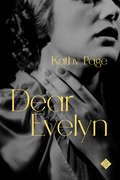- Table View
- List View
Dealing with Crisis: The Japanese Experience and Beyond
Reflecting on the depth of the experience with crises, this innovative book demonstrates what the world can learn from insights into crises from the Japanese perspective. Taking an institutionalist approach with a strong historical precedent, leading scholars in the social sciences and law explore how better to deal with both foreseeable and unforeseen crises.Illustrating their multifaceted and complex nature, the book examines a broad range of crises throughout history, including economic, fiscal and political crises; force majeure events such as pandemics and natural disasters; and military conflicts and acts of war. Chapters consider how various actors anticipate and deal with these crises, looking closely at their different perceptions of crisis and varying degrees of urgency. Analyzing institutional design and response and the impact of psychological factors on disaster preparedness, the book considers how the decision-making capabilities of individuals can be enhanced to improve institutional capacity.Transdisciplinary with an international reach, this topical book will prove invaluable to students and scholars across the social sciences, particularly those interested in Asian politics and environmental policy, disaster preparedness, and institutional design. It also provides guidance for policymakers working in civil code reform.
Dealing with Darwin: Place, Politics, and Rhetoric in Religious Engagements with Evolution (Medicine, Science, and Religion in Historical Context)
by David N. LivingstoneUsing place, politics, and rhetoric as analytical tools, historical geographer David N. Livingstone investigates how religious communities sharing a Scots Presbyterian heritage engaged with Darwin and Darwinism at the turn of the twentieth century. His findings, presented as the prestigious Gifford Lectures, transform our understandings of the relationship between science and religion.The particulars of placeâ€�whether in Edinburgh, Belfast, Toronto, Princeton, or Columbia, South Carolinaâ€�shaped the response to Darwin’s theories. Were they tolerated, repudiated, or welcomed? Livingstone shows how Darwin was read in different ways, with meaning distilled from Darwin's texts depending on readers' own historiesâ€�their literary genealogies and cultural preoccupations. That the theory of evolution fared differently in different places, Livingstone writes, is "exactly what Darwin might have predicted. As the theory diffused, it diverged." Dealing with Darwin shows the profound extent to which theological debates about evolution were rooted in such matters as anxieties over control of education, the politics of race relations, the nature of local scientific traditions, and challenges to traditional cultural identity. In some settings, conciliation with the new theory, even endorsement, was possibleâ€�demonstrating that attending to the specific nature of individual communities subverts an inclination to assume a single relationship between science and religion in general, evolution and Christianity in particular. Livingstone concludes with contemporary examples to remind us that what scientists can say and what others can hear in different venues differ today just as much as they did in the past.
Dealing with Darwin: Place, Politics, and Rhetoric in Religious Engagements with Evolution (Medicine, Science, and Religion in Historical Context)
by David N. LivingstoneUsing place, politics, and rhetoric as analytical tools, historical geographer David N. Livingstone investigates how religious communities sharing a Scots Presbyterian heritage engaged with Darwin and Darwinism at the turn of the twentieth century. His findings, presented as the prestigious Gifford Lectures, transform our understandings of the relationship between science and religion.The particulars of place—whether in Edinburgh, Belfast, Toronto, Princeton, or Columbia, South Carolina—shaped the response to Darwin’s theories. Were they tolerated, repudiated, or welcomed? Livingstone shows how Darwin was read in different ways, with meaning distilled from Darwin's texts depending on readers' own histories—their literary genealogies and cultural preoccupations. That the theory of evolution fared differently in different places, Livingstone writes, is "exactly what Darwin might have predicted. As the theory diffused, it diverged." Dealing with Darwin shows the profound extent to which theological debates about evolution were rooted in such matters as anxieties over control of education, the politics of race relations, the nature of local scientific traditions, and challenges to traditional cultural identity. In some settings, conciliation with the new theory, even endorsement, was possible—demonstrating that attending to the specific nature of individual communities subverts an inclination to assume a single relationship between science and religion in general, evolution and Christianity in particular. Livingstone concludes with contemporary examples to remind us that what scientists can say and what others can hear in different venues differ today just as much as they did in the past.
Dealing with Diversity: A Study in Contemporary Liberalism (Religion and Democracy: Reconceptualizing Religion, Culture, and Politics in a Global Context)
by Domenico MelidoroIn contemporary times, one of the common markers of a liberal society is the presence of a certain degree of diversity, indicated by coexistence of multiple ideas, beliefs, and cultural practices. But how does a complex and differentiated tradition of political thought like liberalism accommodate such diversity without jeopardizing social unity? Formulating a response to this, Dealing with Diversity puts forth an exhaustive theoretical classification of liberalism into comprehensive pro-autonomy, comprehensive pro-toleration, political pro-autonomy, and political pro-toleration. Through a dialectical method, the author offers a critical account of the most adequate system that allows genuine commitment to diversity on the part of liberal institutions, and analyses India’s religious pluralism in this light. The book seeks to provide a solution to the problem of ensuring a liberal, peaceful, and stable coexistence of different groups while giving space to community loyalties, religious belongings, and cultural traditions.
Dealing with the Threat of Cruise Missiles: Dealing With The Threat Of Cruise Missiles (Adelphi series)
by Dennis M GormleyHow can the core transatlantic Allies make coalitions more effective? One year on from Kosovo, disparities in the capabilities of the coalition partners, as well as uneven levels of prior coordination, persist. To address these problems will require much greater force planning in peacetime. This stimulating and influential work offers one of the most comprehensive independent assessments to date of the Kosovo campaign, and of the performance of the NATO allies. An important subject area in which there is a great deal of international interest.
Dealing with the Threat of Cruise Missiles (Adelphi series)
by Dennis M GormleyHow can the core transatlantic Allies make coalitions more effective? One year on from Kosovo, disparities in the capabilities of the coalition partners, as well as uneven levels of prior coordination, persist. To address these problems will require much greater force planning in peacetime. This stimulating and influential work offers one of the most comprehensive independent assessments to date of the Kosovo campaign, and of the performance of the NATO allies. An important subject area in which there is a great deal of international interest.
Dealing with the Visual: Art History, Aesthetics and Visual Culture
by Caroline van Eck Edward WintersOne of the issues underlying current debates between practitioners of art history, visual culture and aesthetics is whether the visual is a unique, irreducible category, or whether it can be assimilated with the textual or verbal without any significant loss. Can paintings, buildings or installations be 'read' in the way texts are read or deciphered, or do works of visual art ask for their own kind of appreciation? This is not only a question of choosing the right method in dealing with visual works of art, but also an issue that touches on the roots of the disciplines involved: can a case be made for the visual as an irreducible category of art, and if so, how is it best studied and appreciated? In this anthology, this question is approached from the angles of three disciplines: aesthetics, visual culture and art history. Unlike many existing overviews of visual culture studies, it includes both painting and architecture, and investigates historical ways of defining and appreciating the visual in their own, contemporary terms. Dealing with the Visual will be of great use to advanced students because it offers an overview of current debates, and to graduate students and professionals in the field because the essays offer in-depth investigations of the methodological issues involved and various historical ways of defining visuality. The topics included range from early modern ways of viewing pictures and sixteenth-century views of Palladio's villas in their landscape settings to contemporary debate about whether there is life yet in painting.
Dealing with the Visual: Art History, Aesthetics and Visual Culture
by Caroline van Eck Edward WintersOne of the issues underlying current debates between practitioners of art history, visual culture and aesthetics is whether the visual is a unique, irreducible category, or whether it can be assimilated with the textual or verbal without any significant loss. Can paintings, buildings or installations be 'read' in the way texts are read or deciphered, or do works of visual art ask for their own kind of appreciation? This is not only a question of choosing the right method in dealing with visual works of art, but also an issue that touches on the roots of the disciplines involved: can a case be made for the visual as an irreducible category of art, and if so, how is it best studied and appreciated? In this anthology, this question is approached from the angles of three disciplines: aesthetics, visual culture and art history. Unlike many existing overviews of visual culture studies, it includes both painting and architecture, and investigates historical ways of defining and appreciating the visual in their own, contemporary terms. Dealing with the Visual will be of great use to advanced students because it offers an overview of current debates, and to graduate students and professionals in the field because the essays offer in-depth investigations of the methodological issues involved and various historical ways of defining visuality. The topics included range from early modern ways of viewing pictures and sixteenth-century views of Palladio's villas in their landscape settings to contemporary debate about whether there is life yet in painting.
Dealing with Wars and Dictatorships: Legal Concepts and Categories in Action
by Liora Israël Guillaume MouralisDemocratic ‘transitions’ in Latin America, Eastern Europe, and South Africa, often studied under the conceptual rubric of ‘transitional justice’, have involved the formation of public policies toward the past that are multifaceted and often ambitious. Recent scholarship rarely questions the concepts and categories transposed from one country to another. This is true both in the language of political life and in the social sciences examining past-oriented public policy, especially policy toward ‘ethnic cleansing’ and the line between the language of political practice, legal analysis, and scholarly discourse has been quite porous. This book examines how these phenomena have been described and understood by focusing recent processes, such as the advent of international criminal justice, in relation to previous postwar and recent purges. By crossing disciplinary approaches and periods, the authors pay attention to three main aspects: the legal or political concepts used (and/or the ones mobilized in the academic work); the circulation of categories, know-how, and arguments; the different levels that can shed light on transitions.
Dealings with God: From Blasphemers in Early Modern Zurich to a Cultural History of Religiousness
by Francisca LoetzEarly modern European society took a serious view of blasphemy, and drew upon a wide range of sanctions - including the death penalty - to punish those who cursed, swore and abused God. Whilst such attitudes may appear draconian today, this study makes clear that in the past, blasphemy was regarded as a very real threat to society. Based on a wealth of primary sources, including court records, theological and ecclesiastical writings and official city statutes, Francisca Loetz explores verbal forms of blasphemy and the variety of contexts within which it could occur. Honour conflicts, theological disputation, social and political provocation, and religious self-questioning all proved fertile ground for accusations of blasphemy, and her contention - that blasphemers often meant more than they said - reveals the underlying complexity of an apparently simple concept. This innovative approach interprets cases of verbal blasphemy as 'speech actions' that reflect broader political, social and religious concerns. Cases in Protestant Zurich are compared with the situation in Catholic Lucerne and related to findings in other parts of Europe (Germany, France, England, Italy) to provide a thorough discussion of different historical approaches to blasphemy - ecclesiastical, legal, intellectual, social, and cultural - in the Early Modern period. In so doing the book offers intriguing suggestions about what a cultural history of religiousness could and should be. By linking a broad overview of the issue of blasphemy, with case studies from Zurich and Lucerne, this book provides a fascinating insight into a crucial, but often misunderstood aspect of early-modern society. The conclusions reached not only offer a much fuller understanding of the situation in Zurich, but also have resonance for all historians of Reformation Europe.
Dealings with God: From Blasphemers in Early Modern Zurich to a Cultural History of Religiousness
by Francisca LoetzEarly modern European society took a serious view of blasphemy, and drew upon a wide range of sanctions - including the death penalty - to punish those who cursed, swore and abused God. Whilst such attitudes may appear draconian today, this study makes clear that in the past, blasphemy was regarded as a very real threat to society. Based on a wealth of primary sources, including court records, theological and ecclesiastical writings and official city statutes, Francisca Loetz explores verbal forms of blasphemy and the variety of contexts within which it could occur. Honour conflicts, theological disputation, social and political provocation, and religious self-questioning all proved fertile ground for accusations of blasphemy, and her contention - that blasphemers often meant more than they said - reveals the underlying complexity of an apparently simple concept. This innovative approach interprets cases of verbal blasphemy as 'speech actions' that reflect broader political, social and religious concerns. Cases in Protestant Zurich are compared with the situation in Catholic Lucerne and related to findings in other parts of Europe (Germany, France, England, Italy) to provide a thorough discussion of different historical approaches to blasphemy - ecclesiastical, legal, intellectual, social, and cultural - in the Early Modern period. In so doing the book offers intriguing suggestions about what a cultural history of religiousness could and should be. By linking a broad overview of the issue of blasphemy, with case studies from Zurich and Lucerne, this book provides a fascinating insight into a crucial, but often misunderstood aspect of early-modern society. The conclusions reached not only offer a much fuller understanding of the situation in Zurich, but also have resonance for all historians of Reformation Europe.
Deall Yr Holocost Yn Ystod CA3 (PDF): Sut Digwyddodd a Pham?
by Stuart Foster Andy Pearce Eleni Karayianni Helen McCordIn 2016 the UCL Centre for Holocaust Education published a landmark study, What do students know and understand about the Holocaust? Almost 10,000 students aged 11 to 18 participated in the research. It was the largest of its kind anywhere in the world. The study indicated that the vast majority of young people found the subject interesting and relevant. However, it also revealed that many students did not have clear knowledge and understanding of the Holocaust. Written in direct response to the findings of the 2016 national study, this textbook significantly improves understanding of the Holocaust by: > Providing you with an appropriate historical overview of key aspects of the Holocaust > Helping you to understand the long-standing hatred of Jews (i.e., the roots of antisemitism) > Deepening your knowledge and understanding of the Holocaust > Encouraging you to challenge common myths and misconceptions (e.g., that Hitler was solely responsible for the Holocaust) > Developing your understanding of key historical concepts (e.g., evidence, interpretation, causation, significance) > Enabling you to answer the big historical question: How and why did the Holocaust happen? > Helping you to appreciate the impact of the Holocaust on ordinary people across Europe > Inviting you to consider the importance of the Holocaust and its significance today This textbook is supported by additional materials and teacher guidance notes on the UCL Centre for Holocaust Education website (holocausteducation.org.uk). The original design, development and distribution of this textbook was funded by the Toni Schiff Memorial Fund and the Pears Foundation. The Centre is enormously grateful for their support. The Wiener Holocaust Library also provided considerable assistance in developing the textbook. Please note: This is a Welsh-language edition
Deall yr Holocost yn ystod CA3: Sut digwyddodd a pham? (Understanding the Holocaust at KS3: How and why did it happen? Welsh-language edition)
by Professor Stuart Foster Dr Andy Pearce Dr Eleni Karayianni Helen McCordIn 2016 the UCL Centre for Holocaust Education published a landmark study, What do students know and understand about the Holocaust? Almost 10,000 students aged 11 to 18 participated in the research. It was the largest of its kind anywhere in the world. The study indicated that the vast majority of young people found the subject interesting and relevant. However, it also revealed that many students did not have clear knowledge and understanding of the Holocaust.Written in direct response to the findings of the 2016 national study, this textbook significantly improves understanding of the Holocaust by:> Providing you with an appropriate historical overview of key aspects of the Holocaust> Helping you to understand the long-standing hatred of Jews (i.e., the roots of antisemitism)> Deepening your knowledge and understanding of the Holocaust> Encouraging you to challenge common myths and misconceptions (e.g., that Hitler was solely responsible for the Holocaust)> Developing your understanding of key historical concepts (e.g., evidence, interpretation, causation, significance)> Enabling you to answer the big historical question: How and why did the Holocaust happen?> Helping you to appreciate the impact of the Holocaust on ordinary people across Europe> Inviting you to consider the importance of the Holocaust and its significance todayThis textbook is supported by additional materials and teacher guidance notes on the UCL Centre for Holocaust Education website (holocausteducation.org.uk).The original design, development and distribution of this textbook was funded by the Toni Schiff Memorial Fund and the Pears Foundation. The Centre is enormously grateful for their support. The Wiener Holocaust Library also provided considerable assistance in developing the textbook.Please note: This is a Welsh-language edition
Dean Acheson: A Life in the Cold War
by Robert L. BeisnerDean Acheson was one of the most influential Secretaries of State in U.S. history, presiding over American foreign policy during a pivotal era--the decade after World War II when the American Century slipped into high gear. During his vastly influential career, Acheson spearheaded the greatest foreign policy achievements in modern times, ranging from the Marshall Plan to the establishment of NATO. In this acclaimed biography, Robert L. Beisner paints an indelible portrait of one of the key figures of the last half-century. In a book filled with insight based on research in government archives, memoirs, letters, and diaries, Beisner illuminates Acheson's major triumphs, including the highly underrated achievement of converting West Germany and Japan from mortal enemies to prized allies, and does not shy away from examining his missteps. But underlying all his actions, Beisner shows, was a tough-minded determination to outmatch the strength of the Soviet bloc--indeed, to defeat the Soviet Union at every turn. The book also sheds light on Acheson's friendship with Truman--one, a bourbon-drinking mid-Westerner with a homespun disposition, the other, a mustachioed Connecticut dandy who preferred perfect martinis. Over six foot tall, with steel blue, "merry, searching eyes" and a "wolfish" grin, Dean Acheson was an unforgettable character--intellectually brilliant, always debonair, and tough as tempered steel. This lustrous portrait of an immensely accomplished and colorful life is the epitome of the biographer's art.
Dean Acheson: A Life in the Cold War
by Robert L. BeisnerDean Acheson was one of the most influential Secretaries of State in U.S. history, presiding over American foreign policy during a pivotal era--the decade after World War II when the American Century slipped into high gear. During his vastly influential career, Acheson spearheaded the greatest foreign policy achievements in modern times, ranging from the Marshall Plan to the establishment of NATO. In this acclaimed biography, Robert L. Beisner paints an indelible portrait of one of the key figures of the last half-century. In a book filled with insight based on research in government archives, memoirs, letters, and diaries, Beisner illuminates Acheson's major triumphs, including the highly underrated achievement of converting West Germany and Japan from mortal enemies to prized allies, and does not shy away from examining his missteps. But underlying all his actions, Beisner shows, was a tough-minded determination to outmatch the strength of the Soviet bloc--indeed, to defeat the Soviet Union at every turn. The book also sheds light on Acheson's friendship with Truman--one, a bourbon-drinking mid-Westerner with a homespun disposition, the other, a mustachioed Connecticut dandy who preferred perfect martinis. Over six foot tall, with steel blue, "merry, searching eyes" and a "wolfish" grin, Dean Acheson was an unforgettable character--intellectually brilliant, always debonair, and tough as tempered steel. This lustrous portrait of an immensely accomplished and colorful life is the epitome of the biographer's art.
Dean Acheson and the Making of U.S. Foreign Policy
by Douglas BrinkleyPresident Truman's Secretary of State (1949-53), Dean Acheson was a crucial figure in the shaping of the postwar world. In an astonishingly creative and demanding tenure Acheson was involved to a degree seldom realized today in a huge range of issues: from the creation of NATO to the Korean War. The result of a major commemorative conference, this volume brings together ten distinguished diplomatic historians, commissioned to write on various aspects of Acheson's career, based on primary archival research.
Dean John Colet of St Paul's: Humanism and Reform in Early Tudor England (International Library of Historical Studies)
by Jonathan ArnoldAn important and original biography of John Colet, the leading humanist theologian in early Tudor England and founder of St Paul's School in London. Taken at face value, the facts of John Colet's life appear to portray a successful, humanist clerical reformer, active in London on the eve of the English Reformation. Born in 1467 into a wealthy background, he absorbed many humanist ideas while travelling in Italy and enjoyed a successful career in the Church before in 1505 he became Dean of St. Paul's Cathedral. There he attempted a series of reforms and, in 1509, established his famous school, which still exists. In fact, as a cleric, John Colet was neither successful nor a reformer, nor were the reforms he attempted particularly welcome. His greatest achievement, and lasting legacy, was the foundation of his school. Thus, in the sphere of Christian humanist education, Colet was a success. He also achieved some fame at Court as a regular preacher, as a royal councillor and as Wolsey's ally. However, in all his dealings, Colet considered the spiritual life to be of paramount importance and his ultimate aim was the deification of sinful humanity, not just for a few exceptional individuals, but for the entire Church. In this respect, Colet's ecclesiastical vision did not effect any significant change in the early sixteenth-century Church, although it nevertheless pointed to the possibility of a more spiritual, unified and holy Church.Colet was a passionate and pious man who does not fall easily into any historical, intellectual or ecclesiastical category. He was not part of a humanist club, but he was a humanist; he was not a proto-Protestant, but he was critical of the Church; he was not a Lollard, but he was suspected of heresy; he was not an Oxford reformer, but he was, for a time, an Oxford intellectual; most importantly, he was not a reformer who actually changed things, although he dearly wished to be. Ultimately, Colet escapes identification with any other set of contemporaneous idealists because his vision was his own. This study offers a timely re-assessment of the life of a complex religious figure of pre-Reformation England.
Dean Spanley: The Novel
by Lord DunsanyThe classic humorous novel about an alcohol-loving clergyman who thinks he is the reincarnation of a dog. Complete with the screenplay and photos from the new film starring Peter O’Toole and Sam Neill.
Deans of Men and the Shaping of Modern College Culture (Higher Education and Society)
by R. SchwartzDeans of men in American colleges and universities were created in the late nineteenth and early twentieth centuries to help manage a growing student population. The early deans often had a personality that allowed them to engage easily with students. Over time, many deans saw their offices increase in size and responsibility. The profession grew slowly but by the 1940's drew several hundred men to annual conferences and many more were members. Deans of men and women were significant figures for college students; many students saw them as the "face" of the college or university. Schwartz traces the role and work of the deans and how they managed the rapidly growing culture of the American college campus in the twentieth century.
Deans of Women and the Feminist Movement: Emily Taylor's Activism (Historical Studies in Education)
by K. SartoriusThis book explores how deans of women actively fostered feminism in the mid-twentieth century through a study of the career of Dr. Emily Taylor, the University of Kansas dean of women from 1956-1974. Sartorius links feminist activism by deans of women with labor activism, the New Left movement, and the later rise of women's studies as a discipline.
The Dean's Watch: The Cathedral Trilogy
by Elizabeth GoudgeA rich and beautiful story, set in a quiet cathedral city.When cathedral dean Adam Ayscough encounters clockmaker Isaac Peabody, their unlikely friendship touches the lives of the entire community. Behind the dean's fearsome reputation lies a humble man crippled by shyness. Desperate to leave behind a lasting legacy of goodness, his only wishes are to serve God and his parishioners, and to be loved by his young and dissatisfied wife.Haunted by the memories of a miserable childhood, gifted clockmaker Isaac Peabody has spent a lifetime perfecting his craft and rejecting all belief in God.Despite their fundamental differences, both men find a common understanding, and discover that faith can come in many different guises.What readers are saying about THE DEAN'S WATCH'Goudge in the class of Victor Hugo, or Dickens' - 5 STARS'Beautifully written, simply couldn't put it down' - 5 STARS'An unforgettable book' - 5 STARS'Just plain delightful' - 5 STARS'A wonderful book, full of atmosphere' - 5 STARS'A must for all Goudge fans' - 5 STARS
Dear California: The Golden State in Diaries and Letters
by David KipenDispatches from a land of extremes, by writers and movie stars, natives and visitors, activists and pioneers, and more. California has always been, literally, a place to write home about. Renowned figures and iconoclasts; politicians, actors, and artists; the world-famous and the not-so-much—all have contributed their voices to the patchwork of the state. With this book, cultural historian and California scholar David Kipen reveals this long-storied place through its diaries and letters, and gives readers a highly anticipated follow up to his book Dear Los Angeles. Running from January 1 through December 31, leaping across decades and centuries, Dear California reflects on the state's shifting landscapes and the notion of place. Entries talk across the centuries, from indigenous stories told before the Spanish arrived on the Pacific coast through to present-day tweets, blogs, and other ephemera. The collected voices show how far we've wandered—and how far we still have to go in chasing the elusive California dream. This is a book for readers who love California—and for anyone who simply treasures flavorful writing. Weaving together the personal, the insightful, the impressionistic, the lewd, and the hysterically funny, Dear California presents collected writings essential to understanding the diversity, antagonisms, and abiding promise of the Golden State. Writings from Edward Abbey, Louis Armstrong, Ambrose Bierce, Octavia Butler, John Cage, Willa Cather, Cesar Chavez, Julia Child, Winston Churchill, Simone de Beauvoir, Albert Einstein, F. Scott Fitzgerald, Jane Fonda, Allen Ginsberg, Dolores Huerta, Langston Hughes, Zora Neale Hurston, Steve Jobs, Billy Joel, Frida Kahlo, John F. Kennedy, Anne Lamott, John Lennon, Groucho Marx, Henri Matisse, Marshall McLuhan, Herman Melville, Charles Mingus, Marilyn Monroe, John Muir, Ronald Reagan, Sally Ride, Joan Rivers, Susan Sontag, Mark Twain, Oscar Wilde, Laura Ingalls Wilder, Mark Zuckerberg, and many others.
Dear California: The Golden State in Diaries and Letters
Dispatches from a land of extremes, by writers and movie stars, natives and visitors, activists and pioneers, and more. California has always been, literally, a place to write home about. Renowned figures and iconoclasts; politicians, actors, and artists; the world-famous and the not-so-much—all have contributed their voices to the patchwork of the state. With this book, cultural historian and California scholar David Kipen reveals this long-storied place through its diaries and letters, and gives readers a highly anticipated follow up to his book Dear Los Angeles. Running from January 1 through December 31, leaping across decades and centuries, Dear California reflects on the state's shifting landscapes and the notion of place. Entries talk across the centuries, from indigenous stories told before the Spanish arrived on the Pacific coast through to present-day tweets, blogs, and other ephemera. The collected voices show how far we've wandered—and how far we still have to go in chasing the elusive California dream. This is a book for readers who love California—and for anyone who simply treasures flavorful writing. Weaving together the personal, the insightful, the impressionistic, the lewd, and the hysterically funny, Dear California presents collected writings essential to understanding the diversity, antagonisms, and abiding promise of the Golden State. Writings from Edward Abbey, Louis Armstrong, Ambrose Bierce, Octavia Butler, John Cage, Willa Cather, Cesar Chavez, Julia Child, Winston Churchill, Simone de Beauvoir, Albert Einstein, F. Scott Fitzgerald, Jane Fonda, Allen Ginsberg, Dolores Huerta, Langston Hughes, Zora Neale Hurston, Steve Jobs, Billy Joel, Frida Kahlo, John F. Kennedy, Anne Lamott, John Lennon, Groucho Marx, Henri Matisse, Marshall McLuhan, Herman Melville, Charles Mingus, Marilyn Monroe, John Muir, Ronald Reagan, Sally Ride, Joan Rivers, Susan Sontag, Mark Twain, Oscar Wilde, Laura Ingalls Wilder, Mark Zuckerberg, and many others.
Dear Deceiver (Mills And Boon Historical Ser.)
by Mary NicholsThe only thing that Dominic could be certain he knew about Emma was that she had been lying to him. He wasn't even sure that Emma Woodhill was her real name. So why on earth was he falling in love with her? Especially when he was already engaged to someone else?
Dear Evelyn
by Kathy PageBorn between the wars in a working-class South London street, Harry Miles is a sensitive and capable boy who attends school on a scholarship and grows into a thoughtful young man. Full of energy and literary ambition, he visits Battersea Library in search of New Writing: instead, however, he discovers Evelyn, a magnetic and independent-minded woman from a narrow, terraced street not far from his own. This is a love story, albeit an unconventional one, about two people who shape each other as they, their marriage and their country change. From London before the sexual revolution to the lewd frescos of Pompeii, from the acrid devastation of Churchill’s North African campaign to the cloying bounty of new-built suburbs, Dear Evelyn is a novel of contrasts, whose portrait of a seventy-year marriage unfolds in tender, spare, and excruciating episodes.
